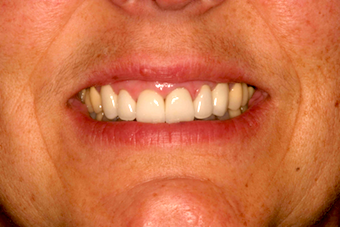

When specifying the materials your lab technician uses in the fabrication of your restorations, how specific do you get? Do you and your technician have an understanding about what materials are to be used at the margins of your restorations? Do you know the advantages and disadvantage to the different choices? Sure we all know your choice affects the esthetics of your restorations, but do you know it can also greatly impact the fit of your restorations. There are two fundamentally different choices. We can choose to have either one material or two at our margins.
Having two materials at our margins is sometimes referred to as a three-way margin. When there is a coping fabricated by the technician who covers the entire preparation this coping is then thinned at the margin and veneering porcelain is then layered over it. The inherent difficulty with this is how to get two materials to end in the same spot? This tends to result in significant compromise because you'll end up with a thick unesthetic margin. To make matters worse, if you are using a metal coping such as gold, the expansion and contraction of the layering porcelain when it is baked onto the thin and relatively soft marginal metal, tends to distort the marginal fit.
Our other choice, and in my opinion our best, is to finish only one material or our margins. You can achieve a much better marginal fit and with the materials available today, you can also have excellent esthetics and strength. While having one material at our margins is of course our default choice when working with monolithic margins, it's when we are working with laminated restorations that we have some choices to make. Our first choice is to either finish our coping to the margin or cut it back and finish veneering porcelain to the margin. In the past considering we were limited to metal or perhaps a few zirconia choices, having exposed coping material at the margins meant an unesthetic marginal area. Today this is not that case with materials such as eMax Lithium Disilicate and even some newer zirconia materials.
As you know there is a lot to think about when picking materials for your restorations. It's important to include the marginal area when making your decisions. It's also essential to communicate with your technician to assure you are both on the same page when it comes to your restorations.
John R. Carson, DDS, PC, Spear Visiting Faculty. [ www.johnrcarsondds.com ]